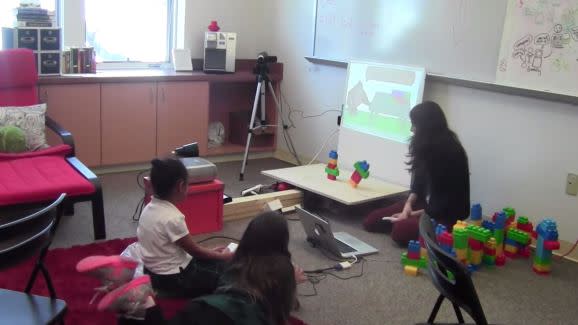Kinect educational game five times as effective as its mobile version

If you’re not reaching, engaging, and monetizing customers on mobile, you’re likely losing them to someone else. Register now for the 8th annual MobileBeat, July 13-14, where the best and brightest will be exploring the latest strategies and tactics in the mobile space.
Experts predict that the learning-games market will grow to $2.3 billion by 2017, with the mobile space leading the charge. But new research shows a lot of value exists in giving kids access to technology-driven learning experiences that extend beyond the screen.
That’s the message coming from a recent study that used Microsoft’s Kinect motion-sensing camera to power an educational game about elementary physics. Researchers from the Human-Computer Interaction Institute at Carnegie Mellon University, Pittsburgh, found that using physical objects along with Kinect improved the effectiveness of learning by nearly five times compared to an equivalent screen-only experience.
The study got groups of kids to build real-world block towers that could withstand a shaking table. The researchers then gave each group one of four different interactive learning experiences using the same format and offering the same educational message — one on a tablet, one on a laptop, and two using real-world objects with a projected screen and a Kinect camera for sensing. They then reassessed the kids’ tower-building skills and understanding afterwards.
The kids that used the Kinect-powered game — with the camera monitoring real-life towers and triggering feedback when they collapsed — learned far more effectively than those using the tablet and laptop games. They built more stable towers afterwards and liked the game significantly more, with one child reportedly asking, “Can I steal your computer and set this up at home?” Integrating physical controls into the screen-only version of the game — where kids shook the tablet to simulate the effect of a shaking table — had little effect on results or enjoyment.
The study concluded that “mixed-reality games that support physical observation in the real world have a great potential to enhance learning and enjoyment for young children.”
The research team is now looking to repeat the study in different educational contexts, with the goal of creating a “scalable, mixed-reality platform connecting virtual and physical worlds via affordable depth-camera sensing” that can improve children’s science learning and enjoyment.
More information:
Powered by VBProfiles
More information:
Powered by VBProfiles

